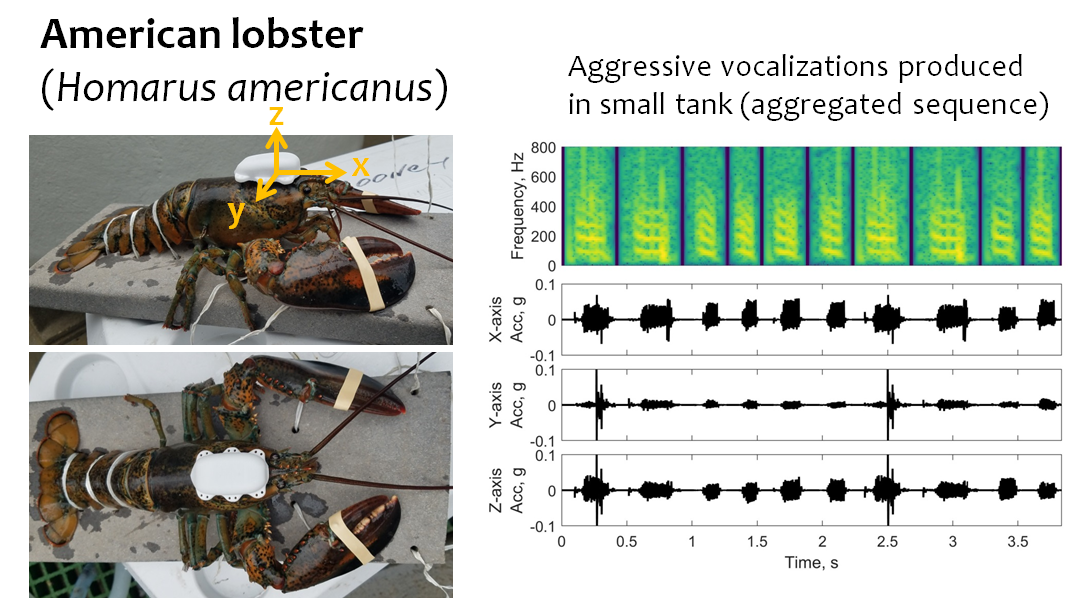Fish Tags
Scalable methods for rapidly assessing fish and invertebrate acoustic repertoires
It is increasingly recognized that many species of fish and invertebrates produce sounds, some species with quite extensive vocal repertoires. Communication signals serve ecologically important functions ranging from mate attraction and territory defense (as seen in male toadfish of many species), to coordination of spawning (e.g. Black Sea Bass, Gulf Corvina). However, for most species we have no knowledge of how they sound or even if they produce sounds at all.
To alleviate this issue, we are developing new technologies that can help us quantify the vocal repertoires of soniferous fish and invertebrates. We have been developing two different types of tags that are either attached to or implanted into fish or invertebrates. Both tags use the same concept – by sampling accelerometers at very high rates, we detect the vibrations associated with sound production and can determine whenever the tagged animal produces a sound (Fig. 1). These sounds are either stored directly to a microSD card on the tag (biologging tag) or trigger a high-frequency coded acoustic signal (active acoustic tag). This coded acoustic signal essentially serves as an acoustic “label” on nearby sound recorders, thus allowing us to rapidly parse the individual components of underwater soundscapes.
Knowledge of the sound repertoire of different species then allows us to start monitoring for presence and potentially abundance of such species, both with new acoustic monitoring projects, and retroactively by mining previously collected data for presence of these signals. These technological innovations therefore will help species conservation and monitoring on local and global scales.
This research is a collaboration between Frants H. Jensen (WHOI), T. Aran Mooney (WHOI), Aaron Rice (Cornell University) and David A. Mann (Loggerhead Instruments), and funded by the National Science Foundation.
